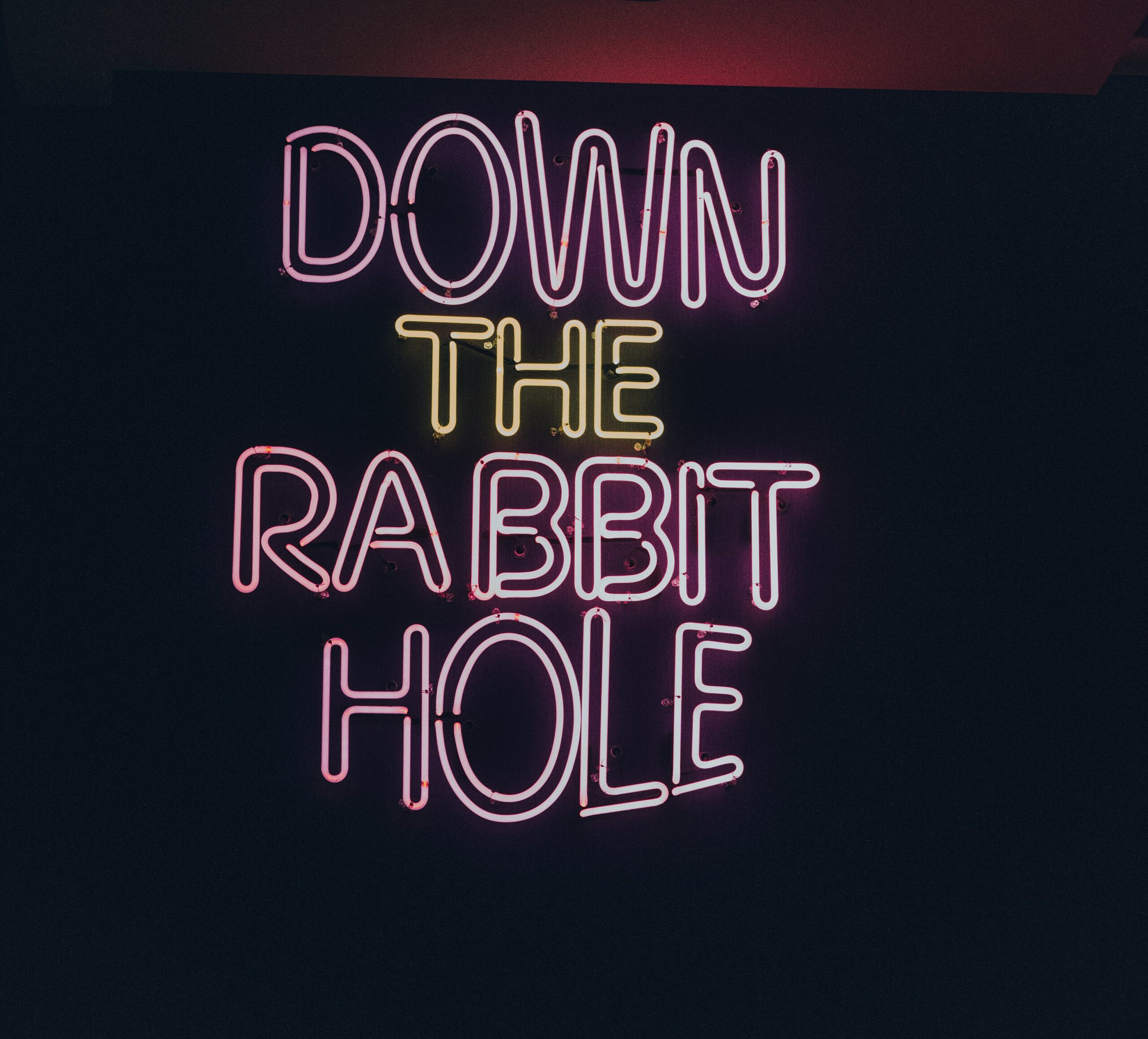Many an ad exec has tumbled down complicated programmatic rabbit holes with many hidden cervices and budget dead zones. It doesn’t have to be this way.
Much like Alice in the famed tale, many Marketers fall down the AdTech rabbit hole of digital automated media buying, a.k.a – programmatic media. Just like Alice, everything seems distorted as peculiar as anything in Wonderland.
AdTech is a place where everything looks normal from a distance but on closer examination, you realize everything is askew.
Traffic numbers become exaggeratedly huge or small depending on the technology potion applied leaving one feeling like poor Alice standing in a sea of tears of her own making.

Many an ad exec have tumbled down these complicated rabbit holes that have many hidden cervices and budget dead zones. These rabbit holes have a nasty habit of being a budget black hole too.
- Traffic sourcing: Using bots that pretend to be actual human traffic, fraudsters sell bulk impressions to publishers at low costs.
- Ghost sites: Using fake websites as primary hosts on programmatic ad exchange platforms, fraudsters get money by generating fake impressions via click fraud.
- SDK spoofing – Software Development Kit (SDK) spoofing involves the creation of bots in an app that send fake clicks and installs to the respective MMP (mobile measurement partner) which counts them as genuine.
- Domain spoofing: This is when a low-quality website is misinterpreted as a high-quality platform to gain substantial programmatic bids. By forging the actual value of the website, fraudsters get away with higher CPM (cost-per-mille) than what it’s really worth.
- Ad stacking: By placing multiple ads on top of one another, this is a technique used by fraudsters to create multiple fake impressions on a single page view. Although only the ad at the top is in readable form, the fraudster gets away with significant monetary gains as all underlying ads are also counted as impressions.
- Click Fraud: This is the complex “under belly” of almost all media buying. Its variations are so broad that it defies classification because it is constantly changing. There’s Competitor Click Fraud; Publisher Click Fraud which is filled with click fraud in “fake” websites, botnet fraud and click farm fraud (real clicks from real people who are paid to click on ads).
- Pixel stuffing: The fraudster deliberately increases the number of ads that can be shown on a website. By forcefully stuffing an ad into a single or a few pixels on the screen, it becomes unreadable to humans but it is counted as an ad.
- Ad injection: Here the fraudsters generate money by injecting ads in a website without the publisher having any idea about the activity. This type of ad usually covers or at times even replaces existing ads.
“US digital media professionals surveyed by verification firm Integral Ad Science (IAS) cited increasing levels of ad fraud as a programmatic challenge,” suggests fraud is getting worse note better, (Source: eMarketer – https://www.emarketer.com/content/digital-ad-fraud-2020.)
Those are fighting words and the industry has not had the stomach to deal with the issues directly or honestly. The murky programmatic supply chain is well suited to hide a host of nefarious activities benefitting a wide swath of the industry from agencies to adtech firms.

The question, therefore most practically, is how can our industry protect the integrity and efficacy of the business by ensuring that digital advertising is really welcome by real users.
We cannot keep operating on the principle that people hate advertising. They don’t.
They hate stupid, intrusive, creepy, irrelevant and irritating advertising. AdTech has made it too easy to push lots of and lots of digital ads that are stupid, intrusive, creepy, irrelevant and irritating. Turning digital around means taking the time and talent to create advertising that people will find helpful, useful, informative, relevant and yes interesting.
The first steps are the hardest but some opportunities are before us:
First, we can work as an industry to collectively fight traffic fraud led by our industry organizations like the IAB and 4As.
Today, there is no coordination between the fraud detection tech companies and the buying platforms as exists in online security.
When ANY security company, Norton for example, finds a security vulnerability they share it with all other security firms and SSL providers within 24 hours. This act has significantly reduced the number of attacks because it is very effective at taking the financial incentive out of the attack. A unified security front between publishers, agencies, traffic verification companies, security companies and exchanges that identify bad actors quickly would go far to restore trust in the digital traffic business.
Second, we can begin to create healthier compensation models for agencies and publishers. Transparency is the key to free us and to let us adopt saner compensation approaches that put as much value (and financial reward) on quality as “scale.”
Tech firms sucked all the margin out of the business but often tasked agencies with implementing all these tech platforms.
Clients didn’t pay them to learn the platforms and tech firms did nothing to help. Aa fairer revenue share system will help keep everyone better compensated so there is less incentive to secretly arbitrage media buys.
Finally, as an industry, we should raise our standards and support platforms designed to deliver advertising that would genuinely be welcomed by users.
This means eschewing “scale platforms” that can push impressions but instead allocating fund to quality and ethical contextual tech in media buying and data.
We can do better by actively participating with technology companies to create better digital advertising experiences that delight users.
If one has spent any time down any programmatic rabbit hole, you know it is both terrifying and infuriating realizing how distorted the impression delivery business has become. To wake up from this dream requires the will, as a community, to create better models that balance scale and relevance with quality. Only then, like Alice, can we get our “muchness” back.





